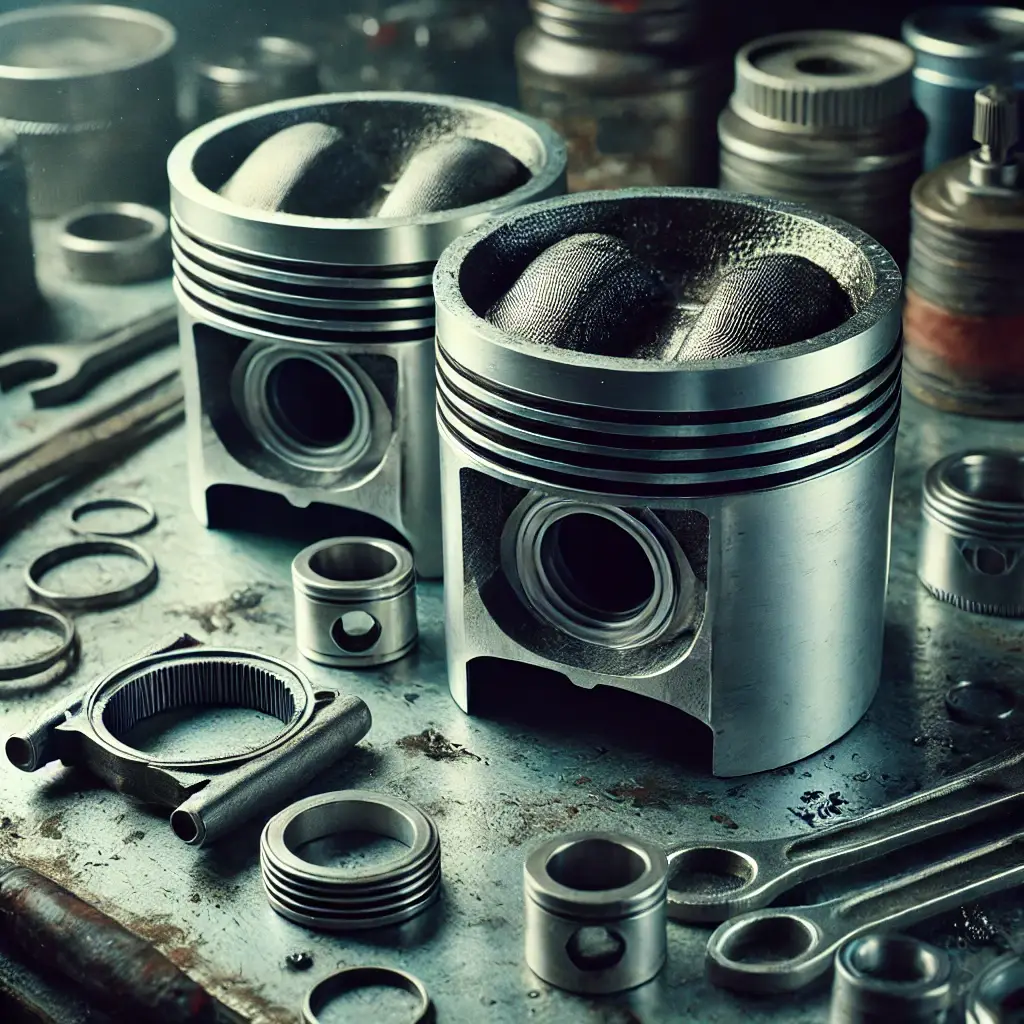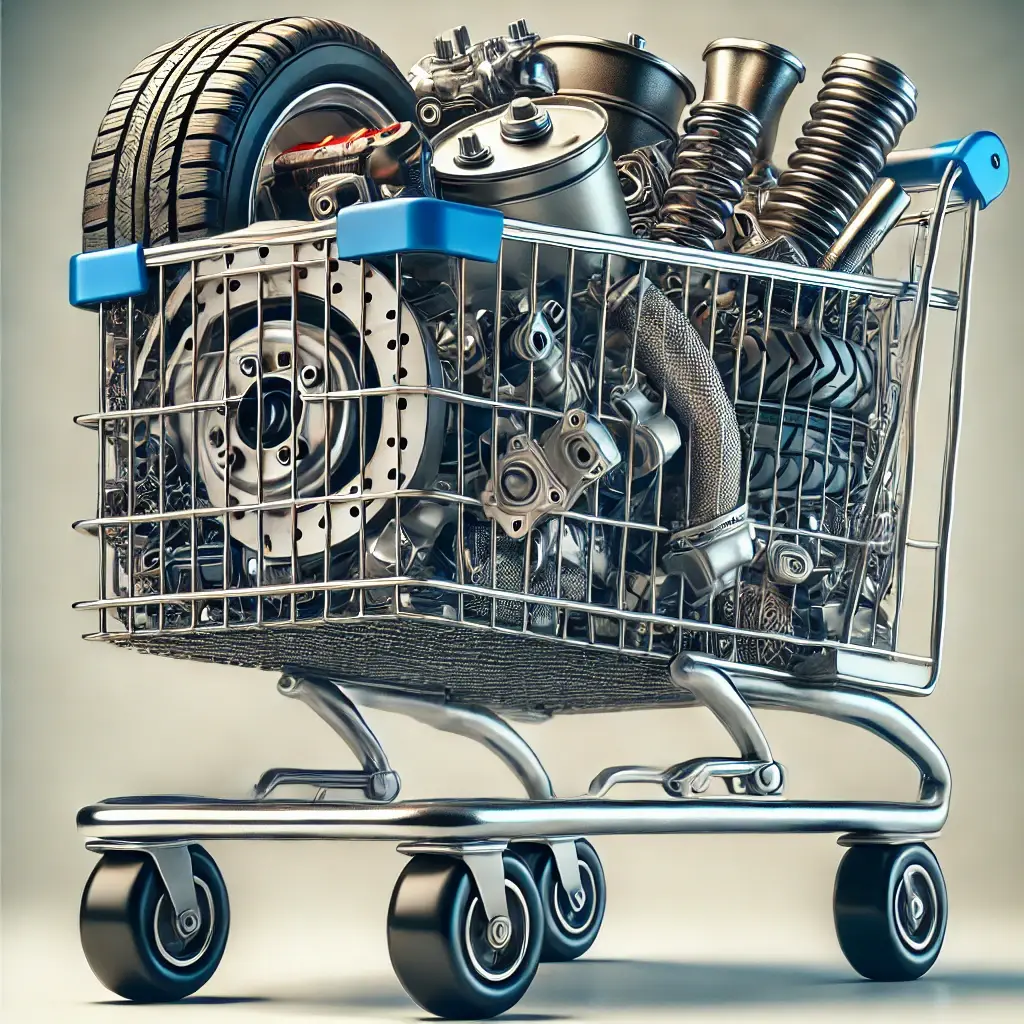
What Are Piston Rings and Their Function
Piston rings are essential components within an internal combustion engine, consisting of circular metal rings that fit into grooves on a piston. Their primary role is to create a tight seal between the piston and the cylinder wall, facilitating efficient engine operation. Typically, there are two main types of piston rings: compression rings and oil control rings. Each serves a distinct purpose in maintaining optimal engine functionality.
Compression rings are positioned at the top of the piston and are responsible for sealing the combustion chamber. This seal prevents gases from escaping during the combustion process, ensuring that maximum pressure is maintained within the cylinder. Consequently, this directly influences the engine’s power and efficiency. A failure in this seal can lead to deteriorating performance, as it allows gases to leak past the piston, which is one of the early signs of worn piston rings. As the rings wear, they become less effective in creating this seal, contributing to lower engine compression and, ultimately, reduced power output.
On the other hand, oil control rings are situated below the compression rings and play a crucial role in controlling oil consumption. They scrape excess oil from the cylinder wall back into the crankcase, preventing the engine from burning excessive oil during combustion. If the oil control rings become worn or damaged, it can lead to increased oil consumption and visible symptoms of worn piston rings, such as blue smoke from the exhaust. Proper functioning of both types of rings is vital for maintaining optimal engine performance and longevity. Therefore, monitoring these components and addressing any signs of wear promptly is crucial for ensuring a well-performing engine.
Common Symptoms of Worn Piston Rings
Worn piston rings can lead to a variety of noticeable symptoms that can significantly impact engine performance. One of the primary signs of worn piston rings is decreased engine performance. When the piston rings wear, they fail to create an effective seal between the piston and cylinder wall. This loss of compression can result in reduced power output and sluggish acceleration, leaving the driver feeling as though the vehicle is not operating at its optimal capacity.
Another common symptom is excessive oil consumption. Piston rings are designed to control the flow of oil into the combustion chamber. When these rings become worn, oil can seep past them and burn along with the fuel during combustion. This not only leads to higher oil consumption but may also cause the oil level in the engine to drop faster than usual, necessitating more frequent oil top-offs.
Furthermore, increased exhaust smoke is a notable indicator of worn piston rings. When oil enters the combustion chamber due to compromised rings, it burns off and produces visible smoke from the exhaust. This is particularly evident during startup or acceleration. The color of the smoke can vary, with blue smoke often indicating that oil is being burned. Observing this smoking behavior is a critical symptom that should not be ignored.
Lastly, unusual engine noises can also signify the presence of worn piston rings. As the rings wear down, the engine may produce rattling or knocking sounds, which can indicate that the engine is struggling to maintain proper compression. These noises can become more pronounced under load, which may alarm the driver and indicate a need for urgent inspection.
Identifying these symptoms of worn piston rings early can be crucial for timely repairs and to prevent further engine damage. Regular maintenance and monitoring of engine performance can help in spotting these signs before they worsen.
Diagnosing Worn Piston Rings
Diagnosing worn piston rings is a crucial step for maintaining engine performance and longevity. Mechanic professionals often begin with a thorough visual inspection of the engine components. This initial step can provide insights into potential issues, such as oil leaks or excessive oil deposits, which can signal the presence of worn piston rings. However, visual inspections alone may not offer definitive evidence of wear.
One of the most effective methods to diagnose worn piston rings is through compression testing. This test involves removing the spark plugs and inserting a compression gauge into the cylinder. The engine is cranked, and the gauge records the maximum pressure achieved during the compression stroke. Low compression readings across multiple cylinders may indicate worn piston rings, as they fail to maintain proper compression levels. A comparison of the compression values among cylinders can further help in narrowing down the diagnosis.
Another significant diagnostic tool is the leak-down test, which goes a step further by measuring the rate at which air escapes from the cylinder. This test involves pressurizing the cylinder with compressed air while observing how much air leaks into adjacent cylinders or the crankcase. A high leakage percentage may suggest worn piston rings, as air typically escapes easily if the seals are compromised.
Additionally, monitoring oil consumption provides crucial information regarding the integrity of the piston rings. An abnormal increase in oil consumption could be a symptom of worn piston rings, as oil may enter the combustion chamber and be burned along with the fuel. Conducting these tests not only helps confirm suspicions about worn piston rings but also assists in determining the necessary repair solutions to restore engine efficiency.
Repair and Replacement Options
When addressing the issue of worn piston rings, car owners often face the decision of whether to repair or replace them. Each option comes with its implications, costs, and effects on vehicle performance. Repairing worn piston rings is generally viewed as a less expensive alternative, particularly if the damage is not extensive. In some cases, a simple reconditioning of the existing rings can restore functionality. However, this approach may not fully eliminate all signs of worn piston rings symptoms, particularly if the underlying engine components have also experienced wear and tear.
On the other hand, replacing worn piston rings tends to be more costly and labor-intensive but can yield better long-term results. Replacement involves disassembling the engine, making it essential to evaluate the overall condition of other related components. If the pistons, cylinder walls, or other surrounding areas exhibit signs of damage, it is prudent to address these issues contemporaneously to avoid further complications. The costs associated with replacement can vary significantly depending on the vehicle make and model, as well as the shop performing the work.
During the repair process, expect to encounter engine disassembly, cleaning, and inspection of the piston assembly. Technicians will check for other symptoms of worn piston rings to determine the full scope of any necessary repairs. Preventive measures can greatly mitigate the risk of worn piston rings developing in the first place. Regular oil changes using the appropriate grade and weight, monitoring engine performance for signs of decreased power or increased oil consumption, and adhering to scheduled engine maintenance can help prolong the lifespan of piston rings. Additionally, utilizing high-quality engine components can further enhance durability against wear.





